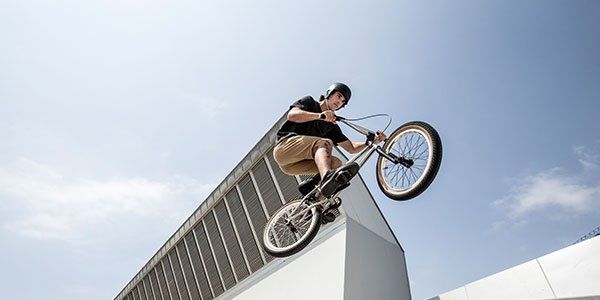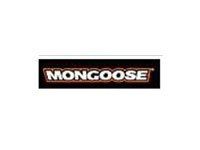Street & Dirt Bikes
Which Street/Dirt BMX is right for me? This can sometimes be a very hard question to answer. Here at Marshall's Cycles we can help you choose a bike that will suit your riding needs.
We have put together this information on the different types of Street/Dirt BMXs available on the market today. Yes! It can all be very confusing…If you need any questions answered you can send us an email, call on (03) 5278 3839 or simply drop into the store for a chat.
History
MX started in the early 1970s when children began racing their bicycles on dirt tracks in southern California, drawing inspiration from the motocross superstars of the time. The size and availability of the Schwinn Sting-Ray made it the natural bike of choice, since they were easily customized for better handling and performance. BMX racing was a phenomenon by the mid-1970s. Children were racing standard road bikes off-road, around purpose-built tracks in [California].
The 1972 motorcycle racing documentary On Any Sunday is generally credited with inspiring the movement nationally in the US; its opening scene shows kids riding their Schwinn Stingrays off-road. By the middle of that decade the sport achieved critical mass, and manufacturers began creating bicycles designed especially for the sport.
George E. Esser founded the National Bicycle League as a non-profit bicycle motocross sanctioning organization in 1974. Before they set up the NBL, George and his wife, Mary, sanctioned motorcycle races with the AMA (American Motocross Association). Their two sons, Greg and Brian, raced motorcycles, but also enjoyed riding and racing BMX with their friends. It was their sons' interest, and there being no BMX organizations in the East, that prompted George to start the NBL in Florida.
By 1977, the American Bicycle Association (ABA) was organized as a national sanctioning body for the growing sport. In April 1981, the International BMX Federation was founded, and the first world championships were held in 1982. Since January 1993 BMX has been integrated into the Union Cycliste Internationale.
In the late 1970s BMX Racing started in Australia, where Geelong had their first BMX club in the early 1980s.
The sport of Bicycle Motocross - Freestyle BMX is now one of the staple events at the annual Summer X Games Extreme Sports competition, held largely on both coasts of the United States. The popularity of the sport has increased due to its relative ease and availability of places to ride and do tricks.
In 2003, the International Olympic Committee made BMX racing a full medal Olympic sport for 2008 Summer Olympic Games in Beijing, China, and Maris Stromberg's (male, for Latvia) and Anne-Caroline Chanson (female, for France) were crowned the first Olympic champions.
Models
BMX bicycles are available several distinct model types
Race
Freestyle (park, street, vert)
Dirt jumping
Flatland
Construction
BMX bikes are designed for Racing, street, park and dirt depending on the make and model.
All other types of BMX bike frames are made of various types of steel. Cheaper low-end bikes are usually made of steel. Mid-range bikes are mostly chromoly or hi tensile steel, which are about the same in weight and strength. The best of BMX bikes uses 4130 chromoly, sometimes the front axle is 14mm thick, but 3/8" is much more common on modern bikes.
The rear axle, however, is always 14mm thick, because it must withstand much more abuse than the front axle does. The introduction and widespread popularity of the cassette hub has ushered in the use of smaller gearing on BMX bikes. Instead of the old 44/16 gearing found on almost all older BMX bikes, new bikes use gearing such as 36/13, 33/12, 28/10, 25/9, and even 23/8. All those gearing ratios feel nearly identical to the old 44/16 gearing when pedalling. Advantages of smaller gearing include lighter weight, and more clearance when grinding. The freewheel hub is all but extinct due to several factors. The smallest freewheels can be made is with 13 teeth, which is larger than most riders prefer.
On most freestyle BMX bikes, the front wheel has 36 spokes, but some more abusive rider's use 48 spoke front wheels, because they are stronger. The same goes for rear wheels. A lot of bikes use 36 spokes, most commonly on dirt jumping bikes. But 48 spoke rear wheels are very common, especially on street bikes, as they must withstand harsher and more frequent impacts.
Race BMX bikes wheels can vary in size, from 20" to 24" and very light weight.
Dirt jumping and freestyle bikes wheel sizes include 16" and 18" for younger, smaller riders, 20" for most other riders.
Street
Street riding involves manoeuvres on obstacles that are typically man made and not designed for bicycles. They can be, but are not limited to, stairs, handrails, ledges, curved walls, banks, unusually shaped architectural designs, trees and even a simple curb.
Large percentage of riders today participate in this discipline. As in the other forms of freestyle riding, there are no specific rules; style, skills, and creativity are stressed. Street riders tend to have no brakes. Usually, they have front and back pegs on one side of the bike. They also tend to ride without flanges on their grips. Some people like this because the flange gets in the way when they are doing a bar spin. Others mostly just like it because of the clean look.
Park / Freestyle
Skate parks are used by BMXers as well as, skateboarders, inline skaters, and scooter-riders. Skate parks themselves can be made of wood, concrete or metal. Styles of riding will depend on the style of the parks. Wood is more suited to a flowing style, with riders searching for gaps, and aiming to air higher from the coping. Concrete parks usually tend to contain bowls and pools. However, it is not unusual for riders to merge the two styles in either type of park.
Concrete parks are commonly built outdoors due to their ability to withstand years of exposure to the elements. Concrete parks are also often publicly funded due to their permanent and costly nature. Parks made from wood are popular with commercial skate parks due to ease of construction, availability of materials, cost, and the relative safety associated with falling on wood instead of concrete. Parks designed with BMX use in mind will typically have steel coping that is less prone to damage than concrete or pool coping.
Trails
Trails are lines of jumps built from dirt (heavily compacted mud). It can also be named as a pack such as a 4 pack, 6 pack and 8 pack. The jumps consist of a steep take off, called a lip, with an often slightly less steep landing. The lip and landing are usually built as separate mounds, divided by a gap. The gap is measured from the topmost part of the lip, horizontally to the topmost part of the far side of the landing. Gaps typically range from only a couple of feet to over twenty feet. A moderate gap is around twelve feet.
Trails riding is sometimes also referred to as “dirt jumping”. Most trails riders maintain that a subtle difference exists in the style and flow of “dirt jumps” and “trails”; trails riders focus more on of a flowing smooth style from one jump to the next while performing more stylish tricks, while dirt jumpers try to perform the craziest tricks, they can over larger, less flow-oriented jumps. This flowing trail style is popularized by riders such as Mike Aitken, Chase Hawk, and Chris Doyle.
Although many regard trails and street as being completely opposite, the attraction is similar — trails riders build their own jumps, so their riding is limited only by their creativity and resourcefulness.
Trails riders usually run a rear brake only as they have no use for a front brake, and usually gyro to make it easier to do bar spin, as they do not have to spins the bars back the other way to untangle it, which is hard to do on trails. In general, trail / dirt jumping bikes have longer wheelbases (chain stays) than other BMXs to aid with stability.
With trails you do not need to pedal so much in between jumps. By “pumping” you gain speed to clear the jumps. Pumping is landing smoothly on the backside of the landing, bending your knees, and crouching down between jumps, and then extending your legs and springing upward off the next lip. The upward springing motion is very similar to that of a bunny hop, only you are using your legs to boost higher off a jump rather than your sole method of vertical propulsion. This pumping action works like swinging on a swing; you can keep swinging indefinitely by continuing the pumping action.
Flatland
Flatland BMX occupies a position somewhat removed from the rest of freestyle BMX. People who ride in the above disciplines will generally take part in at least one of the others, but flatlanders tend to only ride flatland. Flatland differs from the others in that the terrain used is nothing but a smooth, flat surface (e.g., an asphalt parking lot, basketball courts, etc.).
Tricks are performed by spinning and balancing in a variety of body and bicycle positions. Riders almost always use knurled aluminium pegs to stand on to manipulate the bike into even stranger positions.
Flatland bikes typically have a shorter wheelbase than other freestyle bikes. Flatland bikes differ from dirt jumping bikes and freestyle bikes in one way. The frames are often more heavily reinforced because the people riding flatland often stand on the frames. This shorter wheelbase requires less effort to make the bike spin or to position the bike on one wheel. One of the primary reasons flatlanders often ride only flatland is the decreased stability of a shorter bike on ramps, dirt, and street. A variety of options are commonly found on flatland bikes.
The most unifying feature of flatland bikes is the use of four pegs, one on the end of each wheel axle. Flatland riders will choose to run either a front brake, a rear brake, both brakes, and no brakes at all, depending on stylistic preference.







